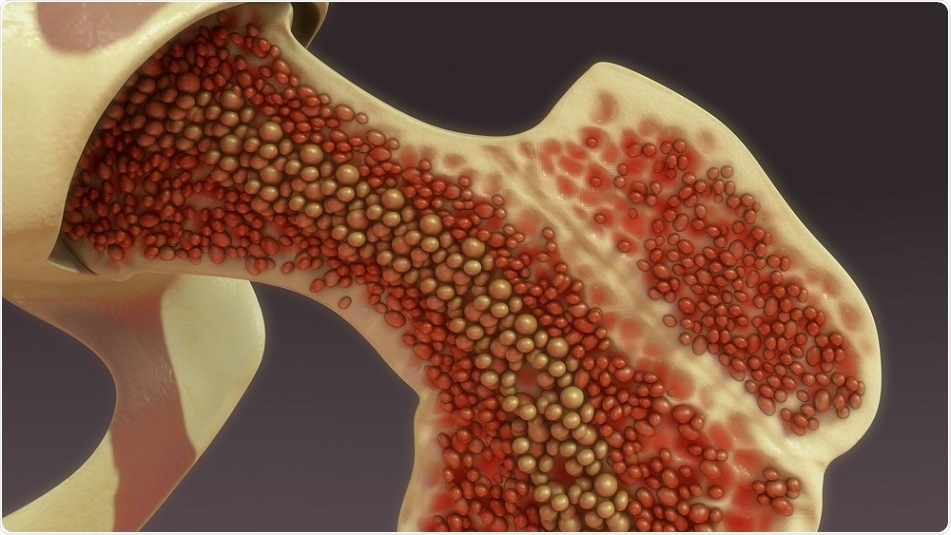Research published today describes for the first time the identification of human skeletal stem cells. The discovery may enable the development of novel therapeutic strategies for diseases that cause skeletal degeneration.

sciencepics | Shutterstock
Stem cells are a class of undifferentiated cells that are able to develop into specialized cell types. Adult stem cells are present in several tissues, such as the liver, skin, bone marrow and skeletal muscles. Typically, they remain quiescent until they are activated to self-renew by disease or tissue injury. Once activated, the adult stem cells divide to generate new cells, which differentiate to become one of several cell types relevant to the tissue of origin.
The ability of stem cells to regenerate a range of specialised cell types gives them invaluable therapeutic potential. For example, haematopoietic stem cells from bone marrow are used as a life-saving treatment for patients with blood cancer who have lost blood stem cells through disease or chemotherapy.
Skeletal stem cells are the progenitor cells for bone, cartilage, and stroma cells. Although skeletal stem cells have been observed in rodent models, they had not been identified in humans. There has been keen interest to isolate human skeletal stem cells in the hope that they could be used as a treatment for degenerative skeletal disorders, such as arthritis, and facilitate the correction of skeletal deformities.
Severe age-related degeneration of skeletal tissues is common, leading to a range of debilitating conditions such as osteoporosis and osteoarthritis and non-healing skeletal injury. However, treatment options to improve skeletal function in affected patients are currently limited. Although, adult human bone is able to repair small- to moderate-sized bone defects, no regenerative ability has been observed in adult cartilage tissues.
Researchers now report that they have identified human skeletal stem cells in adult and foetal bone marrow for the first time. In addition, skeletal stem cells were successfully derived from human induced pluripotent stem cells. Senior author of the research paper, Michael Longaker, highlighted the significance of this discovery.
Given the tremendous medical burden imposed by degenerative, neoplastic, post-traumatic, and postsurgical skeletal disorders, we believe that identifying this human skeletal stem cell and elucidating its lineage map will enable the molecular diagnosis and treatment of skeletal diseases"
Michael Longaker
Having defined the relationships between human skeletal stem cells and downstream skeletal progenitors, the researchers were able to create a detailed lineage map of stem-cell-mediated formation of skeletal tissues in humans. By comparing the molecular and functional differences in specific types of human stem cells with those of other species of vertebrates, the team are trying to uncover convergent and divergent mechanisms underlying skeletal tissue growth and regeneration. It is hoped that such deeper understanding will facilitate the development of strategies to encourage skeletal rejuvenation in humans.
Sources:
Cell Press release 20 September 2018. Available at https://www.eurekalert.org/emb_releases/2018-09/cp-rih091318.php
Chan and Longaker et al. Identification of the Human Skeletal Stem Cell. Cell 2018. Available at https://www.cell.com/cell/ fulltext/S0092-8674(18)30956-5